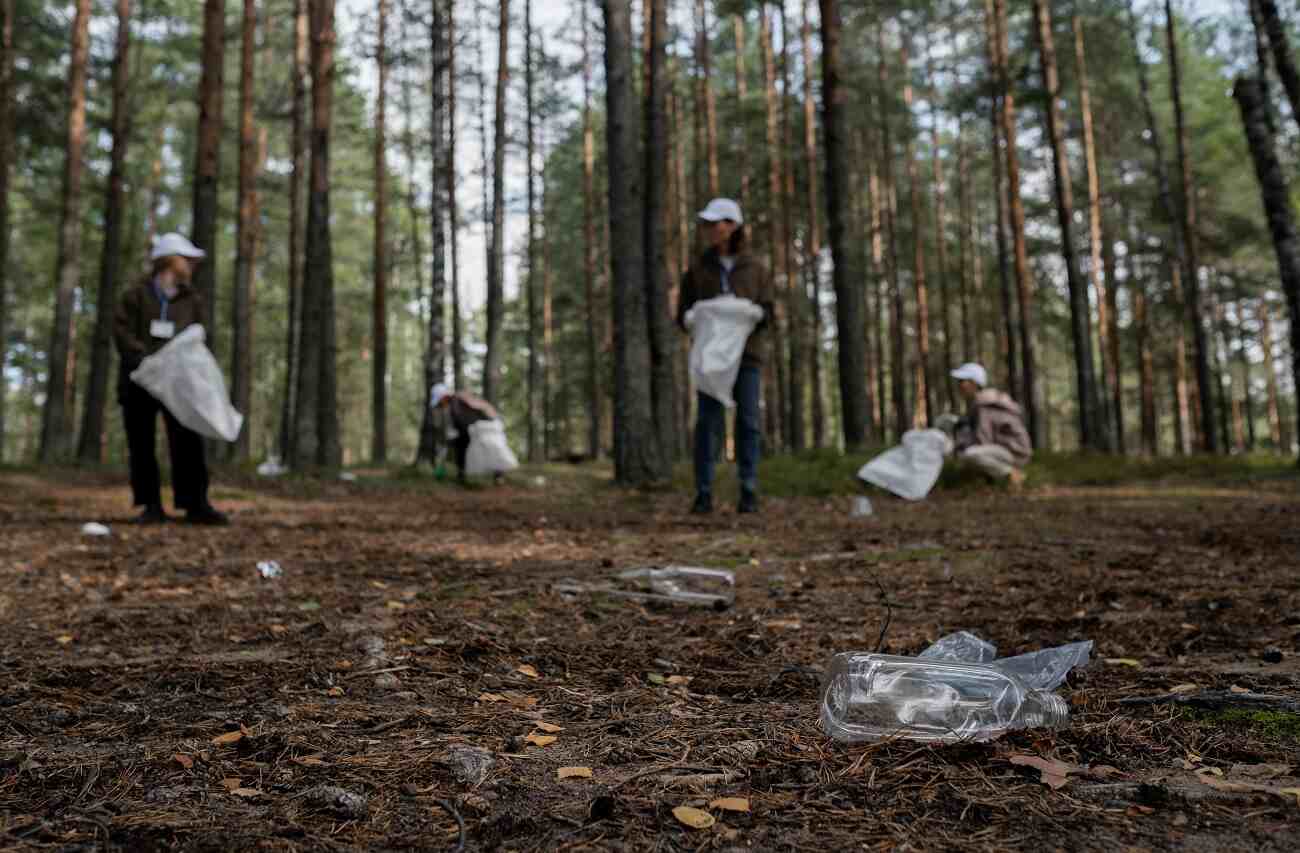
The environmental impact of conventional vs. farm-to-fashion clothing
id you know that the fashion industry produces an estimated 92 million tons of waste annually and is responsible for around 10% of global carbon emissions? Conventional clothing, especially fast fashion, relies heavily on resource-intensive practices, generating pollution and waste at unsustainable levels.
Each year, the industry consumes about 93 billion cubic meters of water, enough to meet the needs of 5 million people, and synthetic fibers like polyester release microplastics into oceans, threatening marine life and ecosystems. In response to these alarming figures, a movement known as “farm-to-fashion” has emerged, promoting sustainable alternatives that prioritize eco-friendly farming, natural fibers, and transparent production processes.
Unlike conventional brands, farm-to-fashion models focus on reducing environmental harm by sourcing locally, supporting regenerative agriculture, and ensuring each garment has a lower ecological footprint. As we confront climate change and dwindling resources, understanding the impact of our clothing choices has never been more critical.
In this blog, we shall examine the environmental footprint of conventional vs. farm-to-fashion clothing to help you understand why sourcing responsibly and advocating for conscious fashion choices can benefit both people and the planet.
Conventional clothing vs. farm-to-fashion
Aspect | Conventional clothing | Farm-to-fashion |
Definition | Conventional clothing refers to fast fashion and mass-produced apparel, prioritizing high turnover and low costs. | Farm-to-fashion emphasizes sustainable, direct sourcing from farms, focusing on transparent and eco-friendly production chains. |
Material use | Uses synthetic fibers like polyester, conventional cotton, and chemical dyes. Polyester alone accounts for around 57% of all fibers used in fashion, releasing microplastics into waterways and taking up to 200 years to decompose. | Relies on organic or natural fibers like organic cotton, hemp, and biodegradable dyes. Natural fibers reduce microplastic pollution and have lower decomposition times, supporting healthier ecosystems. |
Production process | Energy-intensive and resource-heavy. Textile dyeing is responsible for approximately 20% of global industrial water pollution. Production is often outsourced to large factories that rely on fossil fuels, pollute water, and degrade soil quality. | Focuses on sustainable, small-scale farming and production methods that minimize resource use. Regenerative agricultural practices improve soil health, reduce irrigation requirements by up to 30-60%, and often use renewable energy. |
Environmental impact | High carbon emissions, with the fashion industry contributing about 10% of global emissions. Generates significant non-biodegradable waste, with over 85% of textiles ending up in landfills or incinerated each year. Trends drive high disposal rates, leading to an average garment use of only 7-10 wears. | Lower emissions and waste. By using locally sourced materials, farm-to-fashion reduces transport emissions and production waste. Emphasis on durability means garments have a longer lifespan, lowering waste and environmental impact. |
Key principles | Prioritizes low-cost, fast-paced production cycles and synthetic, low-quality materials. | Promotes sustainable practices such as organic farming, biodegradable materials, and ethical, small-scale production. |
Benefits for consumers and artisans | Mass production often overlooks fair wages and safe working conditions, focusing on high-volume output. | Supports local artisans, ensures fair wages, and upholds safer working conditions. Consumers receive higher-quality, unique pieces, and the purchases support artisanal craftsmanship and local economies. |
Environmental impact
To understand the environmental implications of our fashion choices, it is important to analyze how conventional clothing and farm-to-fashion practices affect key ecological factors. Conventional clothing often leaves behind a heavy environmental footprint due to its resource-intensive processes, whereas farm-to-fashion offers a more sustainable approach that mitigates many of these impacts. Below is a comparative table breaking down the environmental effects of both models.
Aspect | Conventional clothing | Farm-to-fashion |
Carbon footprint | Relies on fossil fuels for synthetic fibers like polyester. Shipping and production are projected to generate about 2.7 billion tons of CO₂ by 2030. | Local sourcing and small-scale production minimize transportation emissions. Renewable energy used in some models further reduces carbon impact. |
Water pollution | Textile dyeing contributes to 20% of global industrial water pollution. Chemicals like azo dyes and heavy metals leach into waterways, harming aquatic ecosystems. | Avoids harmful synthetic dyes, opting for biodegradable and natural alternatives. Reduces the risk of water contamination significantly. |
Waste generation | Fast fashion discards over 92 million tons of textile waste annually. Most garments end up in landfills due to low quality and rapid trend cycles. | Encourages durable, long-lasting garments with designs that reduce waste. Organic materials are biodegradable, reducing the landfill burden. |
Microplastics | Synthetic fibers like polyester shed microplastics with each wash, contributing to the 500,000 tons of microplastics that enter oceans yearly. | Natural fibers used in farm-to-fashion degrade naturally, eliminating the problem of microplastic pollution. |
Soil health and biodiversity | Monoculture farming for conventional cotton depletes soil nutrients, and chemical fertilizers harm biodiversity. | Implements regenerative farming, enriching soil and supporting local biodiversity through crop rotation and organic composting methods. |
This comparison underscores how farm-to-fashion practices actively address the pressing environmental challenges posed by conventional clothing, making it a viable alternative for eco-conscious consumers.
Social impact
The social impact of clothing production reveals stark differences between conventional fashion and farm-to-fashion models.

Conventional fashion, particularly within fast fashion, prioritizes cost-cutting and speed, often at the expense of workers’ well-being. Garment workers, primarily in developing nations, frequently endure unsafe working environments, such as overcrowded factories with minimal safety measures. They are paid meager wages, often far below a living wage, and work long hours to meet demanding production schedules.
Studies reveal that the majority of garment workers globally are unable to afford basic needs for their families, perpetuating poverty and limiting upward mobility. This is due to a wide gap between the legal minimum wage and the living wage needed to lead a life with dignity. Additionally, the lack of labor rights and accountability in conventional supply chains leaves workers vulnerable to exploitation and abuse.
In contrast, farm-to-fashion models are built on principles of fairness, transparency, and community empowerment. These practices actively promote fair trade, ensuring that farmers, artisans, and workers receive equitable compensation for their contributions. By offering higher wages and fostering safer working conditions, farm-to-fashion provides workers with a chance to build more secure and dignified lives.
Furthermore, this model supports local artisans and traditional crafts, helping preserve cultural heritage and providing rural communities with sustainable livelihood opportunities. Consumers also benefit by forming a meaningful connection with the stories and efforts behind each garment, creating a sense of shared responsibility and appreciation for the hands that craft their clothes.
Role of the consumers
As consumers, we play a pivotal role in shaping the future of sustainable fashion through our purchasing decisions and habits. Making informed choices begins with identifying sustainable brands that align with eco-friendly and ethical practices. Look for certifications like GOTS (Global Organic Textile Standard) or Fair Trade, which indicate adherence to environmental and social standards. Brands that prioritize transparency in sourcing and production are also key indicators of sustainable fashion.
Shifting focus from quantity to quality is another vital step. Investing in well-made, timeless pieces not only reduces waste but also ensures a longer lifespan for your wardrobe. Opt for versatile designs and durable fabrics that stand the test of time rather than following fleeting trends.
Caring for clothes sustainably further reduces their environmental impact. Wash garments only when necessary, use cold water to save energy, and air dry instead of relying on dryers. Simple repairs, like fixing a button or patching a tear, can significantly extend a garment’s life.
Finally, consider the end-of-life stage for your clothing. Donate items in good condition to charities or thrift stores, repurpose old clothes into cleaning rags or DIY projects, and seek recycling programs for textiles that are beyond repair. Every small step contributes to a collective effort toward reducing the fashion industry’s environmental footprint.
Conclusion
In conclusion, the shift from conventional clothing to farm-to-fashion isn’t just about choosing between two types of garments—it is a reflection of a larger movement towards conscious consumerism. Conventional fashion’s widespread reliance on synthetic materials, unsustainable production methods, and labor exploitation has left an undeniable mark on the environment and society. By contrast, the farm-to-fashion model offers an opportunity to restore balance by supporting ethical practices, reducing ecological footprints, and preserving cultural traditions.
However, the impact of sustainable fashion goes beyond just choosing the right brands. It is about fostering a mindset that values quality over quantity, understanding the journey of textiles, and acknowledging the power we hold as consumers. The cumulative effect of mindful choices, whether it is choosing ethically produced garments, caring for them properly, or responsibly disposing of them, can drive significant change in an industry that has long been driven by overconsumption.
As we continue to explore the path to sustainability, remember that every small decision adds up. Start by reflecting on your sourcing practices and consider how shifting from Conventional Fashion to Farm-to-Fashion can make a tangible difference. Partner with Qalara to discover ethically made, sustainable products and take a step toward a greener future. Your conscious sourcing choices today can drive lasting impact tomorrow!
~ Written by Shambhavi






Leave a Reply